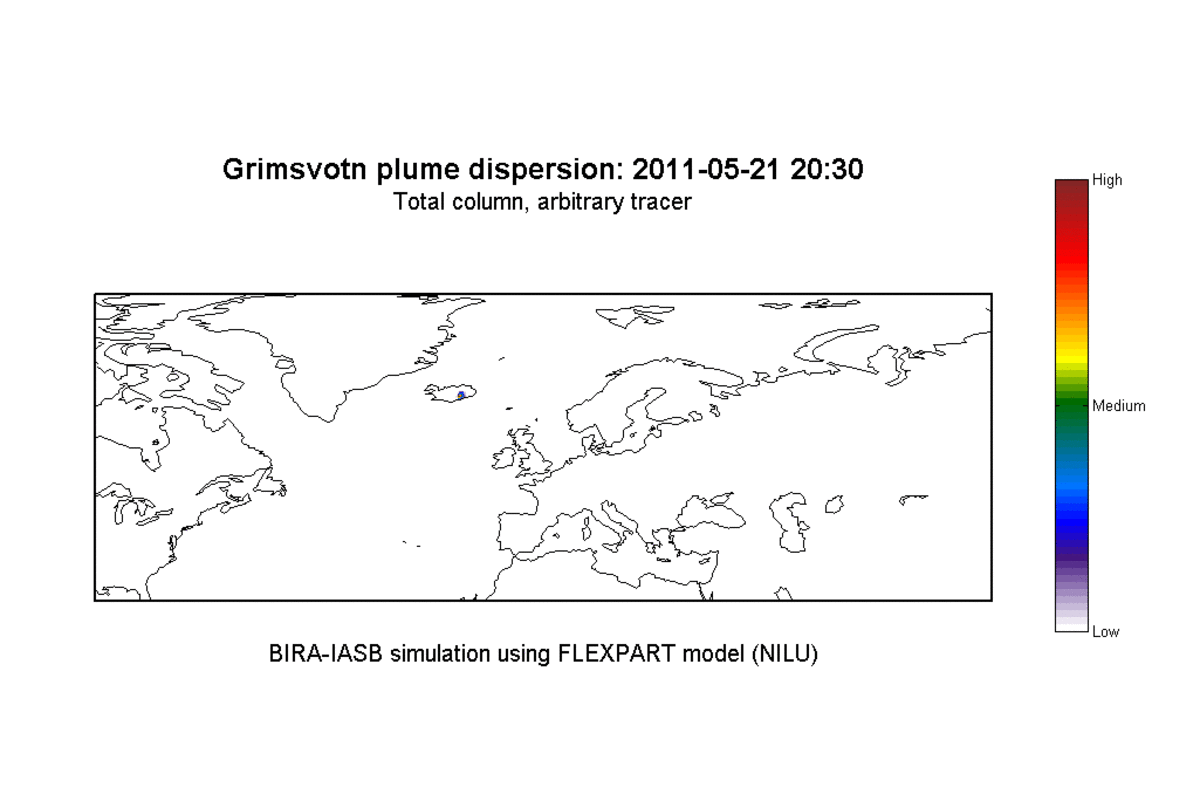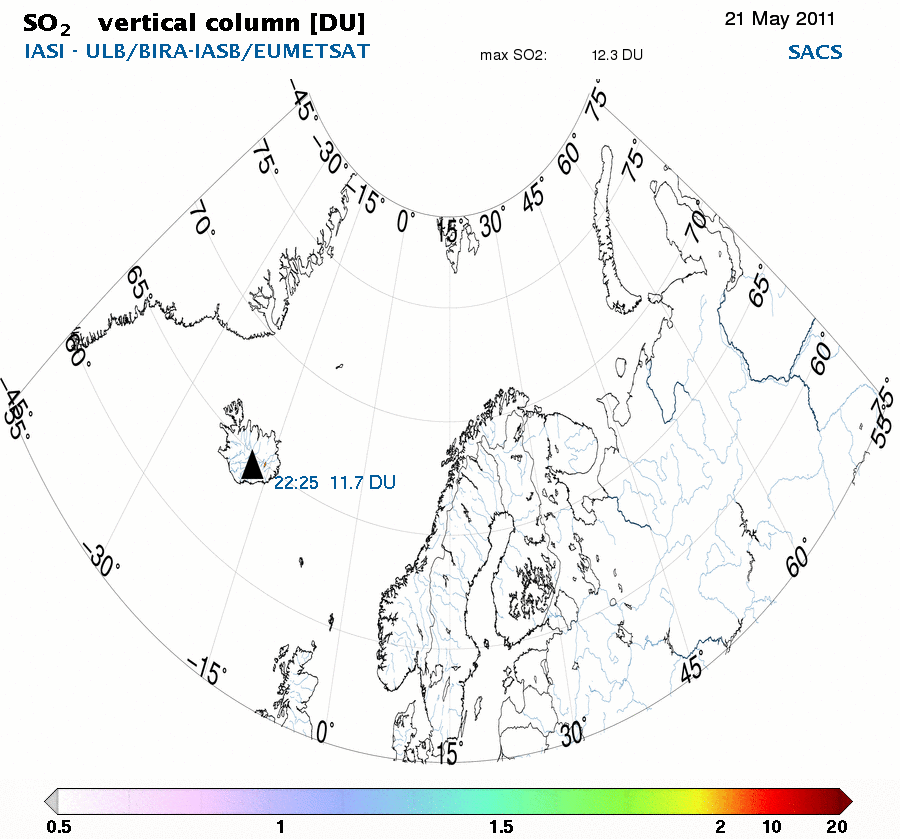Grímsvötn, Iceland's most frequently active volcano in historical time, lies largely beneath the vast Vatnajökull icecap. University of Iceland geophysicist Magnus Tumi Gudmundsson said this eruption, which began Saturday (2011/05/21) at approximately 17:30 UTC, was Grímsvötn's largest eruption for one hundred years. It is hard to predict how long the eruption would last, but it might already be slowing. There are some signs the eruption plume is getting lower now. We may be seeing the first sign that it is starting to decline. In two or three days the worst should be over.

(Credit: STR/AFP)
Iceland closed its main international airport and canceled all domestic flights Sunday (2011/05/22) as this powerful volcanic eruption sent a plume of ash, smoke and steam 20 kilometers into the air. A no-fly zone has been put into effect 220 nautical miles surrounding the location of this event. Grímsvötn's eruption, which was accompanied by small earthquakes, comes just one year after the Eyjafjallajökull volcano erupted. The ash plunged areas near the volcano in southeast Iceland into darkness Sunday (2011/05/22) and covered buildings, cars and fields in a thick layer of gray soot. Civil protection workers urged residents to wear masks and stay indoors.
Extract from the Associated Press, Jill Lawless And Gudjon Helgason, Sun May 22, 6:53 pm ET.
|

Detection of Ash (ULB) by IASI instrument.
 Detection of SO2 (ULB) by IASI instrument.
Detection of SO2 (ULB) by IASI instrument.
 Detection of SO2 (DLR) by GOME-2 instrument.
Detection of SO2 (DLR) by GOME-2 instrument.
|











